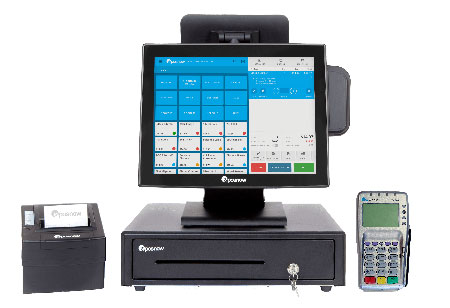THANK YOU FOR SUBSCRIBING
Be first to read the latest tech news, Industry Leader's Insights, and CIO interviews of medium and large enterprises exclusively from Food and Beverage Tech Review
Looking into POS Systems
In addition to working as a computer can work the other business-related activities like inventory, tracking, helps to manage vendor and employee costs, and many.

By
Food and Beverages Tech Review | Wednesday, June 12, 2019
Stay ahead of the industry with exclusive feature stories on the top companies, expert insights and the latest news delivered straight to your inbox. Subscribe today.
FREMONT, CA: Point of Sale System (POS) is a combination of hardware and software that works together to process sales and payment transactions in retail outlets.
POS can seamlessly carry out necessary cash registers functions like creating receipts, adding taxes, ringing up purchases by the department, and tracking sales, and is powered by a local server or an internet connection for its smooth functioning. In addition to working as a computer can work the other business-related activities like inventory, tracking, helps to manage vendor and employee costs, and many.
Different types of POS Systems are used to ensure the smooth function of a business—it is important to note that one size might not meet all requirements.
Every business operates differently, which brings differences into the management of services and the sales process.
1. The Straightforward Retail POS System
When a customer’s product is brought to the checkout counter, the sales associate scans the product barcode, adds all the items in the order, calculate sales tax and provides the dew amount. Retail POS Systems handle these tasks with ease, while also including advanced inventory management capabilities such as color, size, models or style of items. Customer relationship management an create personalized email marketing champions. Splitting tenders for customers who can pay multiple ways for one sale.
2. The Customer Relationship Management POS system
The POS system allows customers to replace manual counts with time-saving and accurate automated processes. POS system alerts the customers when stocks are running low and provides information to be issued to ensure that customers are drawn toward best sellers.
3. Cloud-Based POS System
Saving the business data in the cloud allows accessing and managing the back office of the POS system via the internet. There are different types of POS hardware with various components that have to complete the POS system. Most of the POS create bundles that can include all the equipment to complete the setup.
I agree We use cookies on this website to enhance your user experience. By clicking any link on this page you are giving your consent for us to set cookies. More info


However, if you would like to share the information in this article, you may use the link below:
https://www.fbtechreviewapac.com/news/looking-into-pos-systems-nwid-219.html





